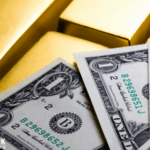Tesla (NASDAQ:TSLA) has taken a significant step forward with the introduction of its long-awaited robotaxi service in Austin, Texas. Envisioned as a leap into autonomous driving, the service was officially launched with limited access, allowing selected analysts and social media influencers to experience the offering first-hand. The move has sparked keen interest, particularly among investors looking for promising developments following a recent downturn in Tesla’s stock performance.
Tesla’s foray into autonomous services reflects an ongoing commitment to redefine urban mobility. Historically, Tesla’s endeavors to develop self-driving vehicles have seen fluctuations in performance, coupled with various regulatory challenges. The recent launch addresses public anticipation while echoing past proclamations of seismic shifts within the automotive sphere. Despite high expectations and previous mixed outcomes, the Austin debut represented a crucial moment for Tesla as it begins to prove its long-term vision.
What Are the Details of Tesla’s New Service?
Tesla officially began operating the robotaxi service within a controlled area in Austin, using Model Y vehicles for passenger transport. With thorough testing at an invite-only event, the service was displayed to a selected audience amidst keen oversight. Notably, rides include a safety monitor to ensure compliance and smooth operation, especially in challenging conditions.
How Did Experts Respond to Tesla’s Latest Move?
Analysts have voiced cautious optimism regarding the robotaxi venture. Dan Ives from Wedbush Securities, who attended the launch, indicated a positive reception yet acknowledged potential obstacles. Despite promotional strength, some attendees documented issues such as navigation errors and handling difficulties. Skeptics, like Barclays’ Dan Levy, stressed careful analysis while acknowledging the service’s implications for Tesla’s future.
Tesla AI and chip design teams celebrated the successful launch, marking a milestone.
This came as a welcome development after a six-month stock dip of over 18%, contrasting sharply with Tesla’s forward-looking market strategies.
Joseph Spak from UBS noted the initial rollout’s modest scope, predicting the use of between 10 to 20 vehicles, describing this as usual for introducing autonomous ride-sharing services. Ronald Jewsikow of Guggenheim Partners characterized the launch as an initial step, emphasizing the need for accelerated progress to meet investor expectations.
Elon Musk envisions a future populated with thousands of self-driving Teslas by 2026. This ambitious target, though, is approached with caution by industry experts citing technological and regulatory hurdles. Despite potential market skepticism, the Austin launch could serve as a pivotal point in building confidence and facilitating broader autonomous vehicle acceptance.
As Tesla ventures further into the realm of autonomous transport, its ability to navigate the challenges of technology development and regulatory environments will be critical. The Austin launch provided insights into both Tesla’s readiness and the complex landscape ahead, with investors and stakeholders watching closely. Innovation in the self-driving vehicle sector remains an intricate and evolving endeavor, with successful implementation contingent on aligning technological leaps with regulatory frameworks.










